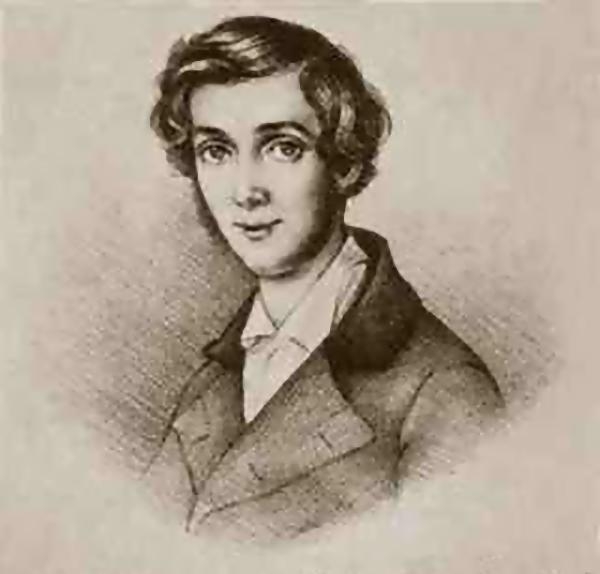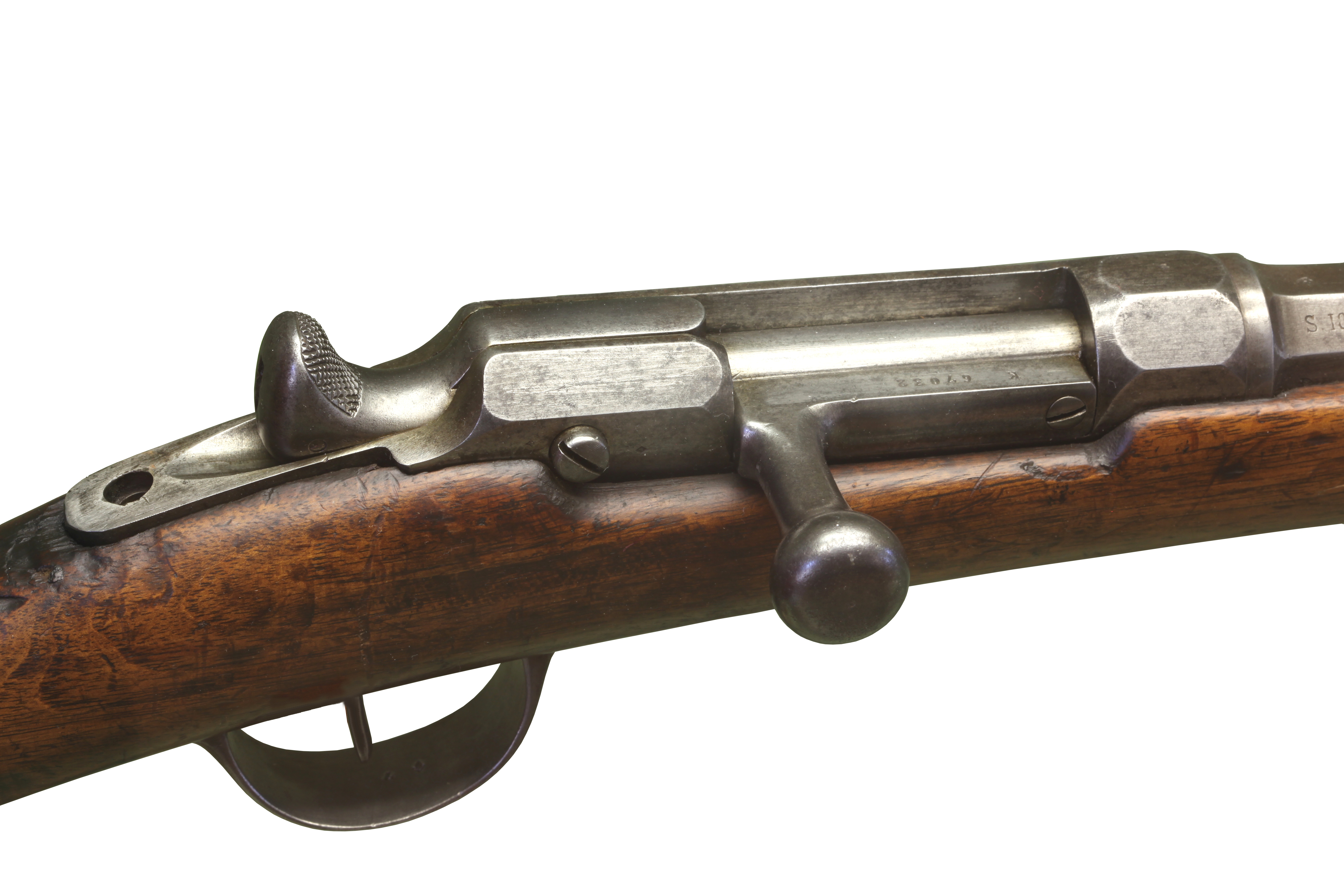|
Podewils Gun
The Podewils gun was a 13.9mm calibre rifle used in the Bavarian army since 1858. It was the most common infantry weapon of the Bavarian army in the Austro-Prussian war of 1866 and the Franco-Prussian war of 1870/71. Theodor Fontane called it an "excellent" weapon of the Austro-Prussian war due to its long range. Originally a muzzleloader, it was converted to breechloading in 1867, the so-called Lindner conversion. In 1869 the Bavarian army started to replace it with the Werder breechloader, but due to budgetary constrains by 1870 most Bavarian troops still used the Podewils while only four infantry battalions had received the Werder (primarily '' Jäger'' units). Even the Lindner conversion was inferior to both the Prussian Dreyse needle gun and the French Chassepot. See also * Green percussion rifle, a Serbian conversion of Austrian Lorenz M1854, similar in appearance and action. References * ''CAPPING BREECH-LOADER THE DEVELOPMENT OF THE PODWEWILS & WERDER RIFLES OF ... [...More Info...] [...Related Items...] OR: [Wikipedia] [Google] [Baidu] |
Rifle
A rifle is a long-barreled firearm designed for accurate shooting, with a barrel that has a helical pattern of grooves ( rifling) cut into the bore wall. In keeping with their focus on accuracy, rifles are typically designed to be held with both hands and braced firmly against the shooter's shoulder via a buttstock for stability during shooting. Rifles are used extensively in warfare, law enforcement, hunting, shooting sports, and crime. The term was originally ''rifled gun'', with the verb ''rifle'' referring to the early modern machining process of creating groovings with cutting tools. By the 20th century, the weapon had become so common that the modern noun ''rifle'' is now often used for any long-shaped handheld ranged weapon designed for well-aimed discharge activated by a trigger (e.g., personnel halting and stimulation response rifle, which is actually a laser dazzler). Like all typical firearms, a rifle's projectile (bullet) is propelled by the contained def ... [...More Info...] [...Related Items...] OR: [Wikipedia] [Google] [Baidu] |
Kingdom Of Bavaria
The Kingdom of Bavaria (german: Königreich Bayern; ; spelled ''Baiern'' until 1825) was a German state that succeeded the former Electorate of Bavaria in 1805 and continued to exist until 1918. With the unification of Germany into the German Empire in 1871, the kingdom became a federated state of the new empire and was second in size, power, and wealth only to the leading state, the Kingdom of Prussia. The polity's foundation dates back to the ascension of prince-elector Maximilian IV Joseph of the House of Wittelsbach as King of Bavaria in 1805. The crown would go on being held by the Wittelsbachs until the kingdom came to an end in 1918. Most of the border of modern Germany's Free State of Bavaria were established after 1814 with the Treaty of Paris, in which the Kingdom of Bavaria ceded Tyrol and Vorarlberg to the Austrian Empire while receiving Aschaffenburg and Würzburg. In 1918, Bavaria became a republic after the German Revolution, and the kingdom was thus succeeded ... [...More Info...] [...Related Items...] OR: [Wikipedia] [Google] [Baidu] |
Austro-Prussian War
The Austro-Prussian War, also by many variant names such as Seven Weeks' War, German Civil War, Brothers War or Fraternal War, known in Germany as ("German War"), (; "German war of brothers") and by a variety of other names, was fought in 1866 between the Austrian Empire and the Kingdom of Prussia, with each also being aided by various allies within the German Confederation. Prussia had also allied with the Kingdom of Italy, linking this conflict to the Third Italian War of Independence, Third Independence War of Italian unification. The Austro-Prussian War was part of the wider Austria-Prussia rivalry, rivalry between Austria and Prussia, and resulted in Prussian dominance over the German states. The major result of the war was a shift in power among the German states away from Austrian and towards Prussian hegemony. It resulted in the abolition of the German Confederation and its partial replacement by the unification of Germany, unification of all of the northern German sta ... [...More Info...] [...Related Items...] OR: [Wikipedia] [Google] [Baidu] |
Theodor Fontane
Theodor Fontane (; 30 December 1819 – 20 September 1898) was a German novelist and poet, regarded by many as the most important 19th-century German-language realist author. He published the first of his novels, for which he is best known today, only at age 58 after a career as a journalist. Fontane's novels are known for their complex, often sceptical view of society in the German empire; he shows different social and political parts of society meeting and sometimes clashing. Other trademarks of Fontane's work are their strongly drawn female characters (such as ''Effi Briest'' and ''Frau Jenny Treibel''), tender irony and vivid conversations between characters. Life Youth Fontane was born in Neuruppin, a town 30 miles northwest of Berlin, into a Huguenot family. At the age of sixteen he was apprenticed to an apothecary, his father's profession. He became an apothecary himself and in 1839, at the age of 20, wrote his first work (''Heinrichs IV. erste Liebe'', now lost). His ... [...More Info...] [...Related Items...] OR: [Wikipedia] [Google] [Baidu] |
Muzzleloader
A muzzleloader is any firearm into which the projectile and the propellant charge is loaded from the muzzle of the gun (i.e., from the forward, open end of the gun's barrel). This is distinct from the modern (higher tech and harder to make) designs of breech-loading firearms. The term "muzzleloader" applies to both rifled and smoothbore type muzzleloaders, and may also refer to the marksman who specializes in the shooting of such firearms. The firing methods, paraphernalia and mechanism further divide both categories as do caliber (from cannons to small-caliber palm guns). Modern muzzleloading firearms range from reproductions of sidelock, flintlock and percussion long guns, to in-line rifles that use modern inventions such as a closed breech, sealed primer and fast rifling to allow for considerable accuracy at long ranges. Modern mortars use a shell with the propelling charge and primer attached at the base. Unlike older muzzleloading mortars, which were loaded the same way as ... [...More Info...] [...Related Items...] OR: [Wikipedia] [Google] [Baidu] |
Breechloader
A breechloader is a firearm in which the user loads the ammunition (cartridge or shell) via the rear (breech) end of its barrel, as opposed to a muzzleloader, which loads ammunition via the front ( muzzle). Modern firearms are generally breech-loading – except for replicas of vintage weapons. Early firearms before the mid-19th century were almost entirely muzzle-loading. Mortars and the Russian GP-25 grenade launcher are the only muzzleloaders remaining in frequent modern usage. However, referring to a weapon specifically as breech loading is mostly limited to single-shot or otherwise non-repeating firearms, such as double-barreled shotguns. Breech-loading provides the advantage of reduced reloading time, because it is far quicker to load the projectile and propellant into the chamber of a gun/cannon than to reach all the way over to the front end to load ammunition and then push them back down a long tube – especially when the projectile fits tightly and the tub ... [...More Info...] [...Related Items...] OR: [Wikipedia] [Google] [Baidu] |
German Military Rifles
The evolution of German military rifles is a history of common and diverse paths followed by the separate German states, until the mid-19th century when Prussia emerged as the dominant state within Germany and the nation was unified. This article discusses rifled shoulder arms developed in or for the military of the states that later became Germany; it excludes firearms of the Austrian Empire, except where they were used substantially by German troops. There was also a period in the late 20th century when Germany was again divided and the two nations had separate armies and weapons, in "Cold War" opposition. The various rifles used during this period are displayed here, identified by either East German or West German usage. Early ''Jäger'' rifles ''Jäger'' (German, lit. "hunter") were a type of soldier, a form of light infantry, first named by the Landgrave of Hesse when he formed such a unit from his foresters and huntsmen in 1631. Huntsmen and foresters recruited in certain Ger ... [...More Info...] [...Related Items...] OR: [Wikipedia] [Google] [Baidu] |
Jäger (infantry)
(singular , plural , ; " hunter") is a German military term referring to specific light infantry units. In German-speaking states during the early modern era, the term ''Jäger'' came to denote light infantrymen whose civilian occupations (mostly hunters and foresters) made them well-suited to patrolling and skirmishing, on an individual and independent basis, rather than as part of a large-scale military unit or traditional line infantry. As a consequence, ''Jäger'' was used to describe skirmishers, scouts, sharpshooters and runners. The word's usage and derivatives broadened over time. For instance, was the name given by the Prussian Army to scouts and runners. Conversely, in the modern German army (), is the name given to military police. is usually translated into English as: * "rifleman" (in an infantry role) or "Rifles" (in regimental names); and * "ranger" (especially in North American English; see below). In English is often written as (both pl. and sgl ... [...More Info...] [...Related Items...] OR: [Wikipedia] [Google] [Baidu] |
Dreyse Needle Gun
Dreyse may refer to: * Johann Nicolaus von Dreyse (1787–1867), German firearms inventor * Hitch Dreyse, a fictional character in '' Attack on Titan'' (''Shingeki no Kyojin'') series who serves in the military police. * Dreyse needle gun, a German service rifle 1841-1873 * Dreyse M1907 The Dreyse Model 1907 is a semi-automatic pistol designed by Louis Schmeisser. The gun was named after Nikolaus von Dreyse, the designer of the Dreyse Needle Gun. The Waffenfabrik von Dreyse company was acquired by Rheinische Metallwaren & Masc ..., a German semi-automatic pistol 1907-1945 * Waffenfabrik von Dreyse, a firearms manufacturing company taken over in 1901 by Rheinische Metallwaaren- und Maschinenfabrik Sömmerda; later, Rheinmetall {{disambig, surname Surnames of German origin ... [...More Info...] [...Related Items...] OR: [Wikipedia] [Google] [Baidu] |
Chassepot
The Chassepot (pronounced ''SHAS-poh''), officially known as ''Fusil modèle 1866'', was a bolt-action military breechloading rifle. It is famous for having been the arm of the French forces in the Franco-Prussian War of 1870–1871. It replaced an assortment of Minié muzzleloading rifles, many of which were converted in 1864 to breech loading (the Tabatière rifles). An improvement to existing military rifles in 1866, the Chassepot marked the commencement of the era of modern bolt action, breech-loading military rifles. The Gras rifle was an adaption of the Chassepot designed to fire metallic cartridges introduced in 1874. It was manufactured by ''Manufacture d'armes de Saint-Étienne'' (MAS), ''Manufacture d'Armes de Châtellerault'' (MAC), ''Manufacture d'Armes de Tulle'' (MAT) and, until 1870, in the ''Manufacture d'Armes de Mutzig'' in the former Château des Rohan. Many were also manufactured under contract in England (the "Potts et Hunts" Chassepots delivered to the ... [...More Info...] [...Related Items...] OR: [Wikipedia] [Google] [Baidu] |








